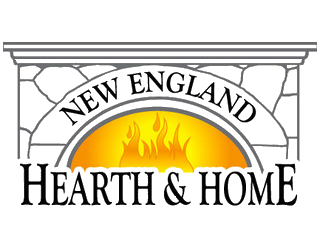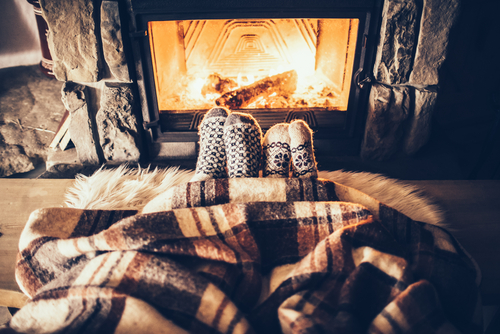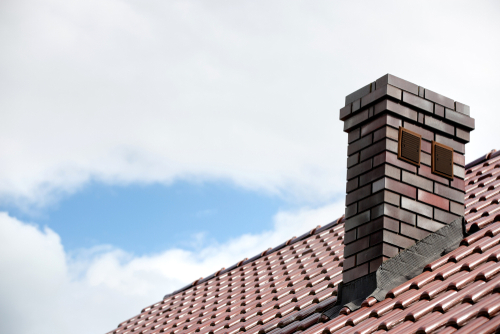If you just moved into a new house or decide to try the fireplace that hasn’t been touched in years, it’s a good idea to have it inspected and cleaned. You may wonder, why? It’s because fireplaces and chimneys serve as a ventilation system for your home. Even furnaces rely on chimneys to circulate fresh air. It takes carbon monoxide and brings it through the chimney to outside. If you don’t get your chimney inspected every year to check for issues, your home’s ventilation may not be up to code.
Checking For Animals
Smaller outdoor animals like squirrels, birds, and raccoons love using chimneys as a form of shelter. They end up building nests in chimneys made out of leaves, dirt, twigs, and branches – which are all flammable materials. They also may leave behind droppings which can cause bad odor in your chimney and fireplace. Before starting up a fire, make sure your chimney is clear of animals and their homes.
Musty Smells
Musty smells coming from your fireplace can mean there is a moisture issue within your chimney. If you think something may have passed away in your chimney, you’re probably right. That happens often, especially when animals have made homes up there. Make sure to not start a fire in your fireplace until the animal has been removed. Burning it will not make the smell go away.
Fireplace That Has Never Been Used
Even if you have a fireplace that you know has never been used, the right way to go about starting your first fireplace fire is to have it inspected prior. Homeowners there before you, environmental wear and tear, and outdoor creatures are still factors that could have changed the way your fireplace will function. The freezing winter temperatures can also take a toll on your chimney and how it holds up.
What Happens During A Fireplace Inspection
A simple and common chimney inspection includes a chimney sweep looking for damage, obstructions, soot, and creosote buildup, using a flashlight. If it is in need of being swept, they’ll use brushes, a vacuum, and extension poles to do so. If you just bought the house, or experienced harsh weather conditions, the inspection will continue on the roof, in the attic, and crawl spaces. They can use video scanning and other tools to determine the damage of the chimney.
Contact Us
New England Hearth & Home wants to make sure you use your fireplace safely. Give us a call at 781-562-0071 or fill out our contact form. We look forward to taking care of your fireplace needs!
Frequently Asked Questions About Fireplaces:
How can I get rid of unpleasant odors coming from my fireplace?
Although a fireplace can add tranquility to your home, this can be interrupted by obnoxious fumes. Common practices to eliminate these odors include; spraying a fireplace deodorant, using charcoal to absorb the smell, placing an air purifier near the fireplace, and calling a professional for further inspection and potential repair.
What is the best way to start a fireplace?
When lighting a fireplace, there are two methods more widely used than others. The Log Cabin Method is performed by placing two rows of parallel logs on top of each other to form a simple log cabin-like structure. Layers can continue to be added, allowing for a bigger fire with more to feed on. The other option is the Top-Down Method. Instead of using rows of two parallel logs, this method involves organizing the wood by size, placing the larger pieces at the bottom of the pile. This approach is more commonly recommended and can be much more efficient than the Log Cabin method.
How does my gas fireplace get ventilation?
Fireplaces are able to release smoke and other toxins in exchange for fresh air by using a direct-vent system. This involves connecting your chimney to the air from outside, rather than the circulated air from indoors. As cool air rushes through a pipe that opens up to the outdoors, an inner chamber forces out toxins and exhaust.
Is it expensive to get my fireplace inspected?
As long as there aren’t unforeseen challenges or damage to your chimney, the average cost of an inspection is between $300-$600. Usually, the cost for cleaning services is included in this price as well. If there is anything that needs to be replaced or repaired, costs tend to add up quickly. By taking proper care of your fireplace, you can decrease the cost to maintain it and increase its longevity.
What is a safety pilot?
Most gas fireplaces contain a small flame, called the pilot light, that is constantly burning to allow for easy ignition. When this light flame starts to burn too hot or is blown out, the pilot valve will automatically close all the other valves in the system, stopping gas from entering.
Is it safe to shut off my fireplace pilot light during the summer?
Yes, it is safe to turn your fireplace’s pilot light off in the warmer months. By doing so, you can conserve energy usage and costs.
How do I know if my fireplace is ready to be used?
A fireplace is safe to use when it is able to ignite instantly, the presenting flame is blue in color, and all exhaust and fumes are able to be vented out properly. It is almost a smart idea to thoroughly examine your fireplace for any damages, cracks, or hazards. You should never light your fireplace if you do not have a working and accessible fire extinguisher nearby.
Is it safe to hang a TV above my fireplace?
Although it can be aesthetically pleasing, mounting a TV on the wall above your fireplace can be very dangerous and is advised against. It is recommended that TVs are placed in an area that is 100 degrees Fahrenheit or cooler, or the risk for damage sharply increases.
Who can I call for to inspect my fireplace?
The only way to guarantee that your fireplace is safe to be lit is to call a professional for a full inspection. New England Hearth and Home is a team of experts who can help you with any questions or assistance you may need for your fireplace. Call us today at (781) 562-0771, or come to our store in Canton, MA.



